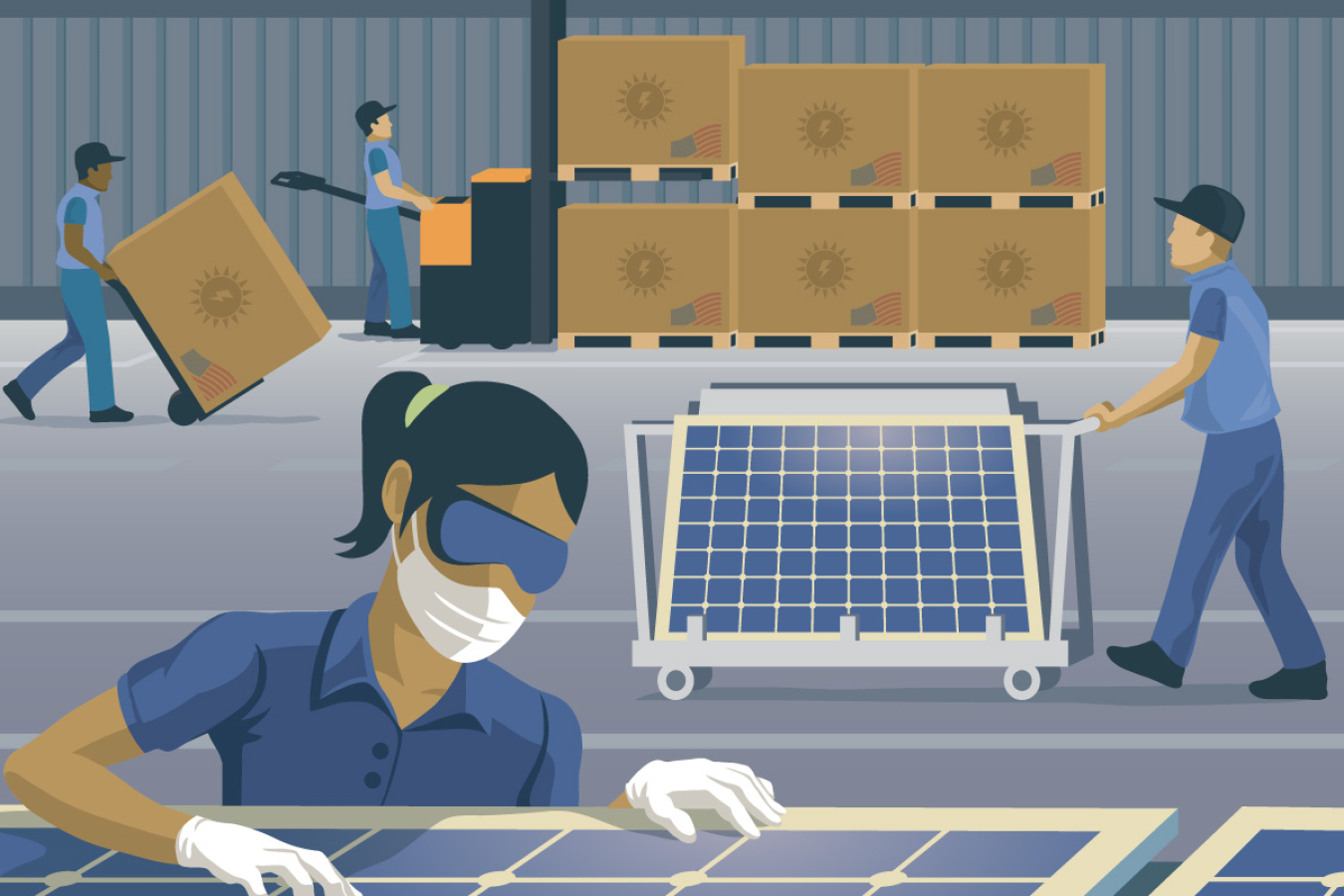
Rising and Shining: LPO investments across the solar supply value chain help create quality jobs, strengthen domestic manufacturing, and harness the power of the sun.
The United States is positioned to create the robust domestic solar photovoltaic (PV) supply chain needed to support the Biden-Harris Administration’s ambitious goals to decarbonize the power sector by 2035 and the economy by 2050. Onshoring critical PV component manufacturing will create quality U.S. jobs, build technical expertise and capability, simplify shipping and logistics, and reduce supply chain insecurity, all while helping developers plan for and meet deployment timelines.
The Department of Energy (DOE) Loan Programs Office (LPO) is working to strengthen domestic solar PV manufacturing and deployment by providing access to debt capital for qualifying projects across the supply chain, from materials processing through installation.
Why Solar Supply Chain?
To meet the Biden-Harris Administration’s target for a decarbonized grid by 2035, the U.S. needs to install 60 GWac of PV generation capacity per year starting in 2025. Since the passage of President Biden’s Inflation Reduction Act (IRA) and corresponding solar manufacturing incentives, companies have announced module assembly projects totaling almost 50 GWdc of annual manufacturing capacity. Most of these capacity announcements are expected to come online within the next two to three years.
However, upstream component manufacturing continues to lag. Silicon wafer and cell manufacturing facilities and processes take longer to design, permit, build, and ramp up than module assembly facilities do. To keep pace with projected demand, the United States will be reliant on imports of these components until there is significant scale-up of the early stages of the U.S. solar supply chain.
DOE has identified several barriers to that scale-up, some of which LPO may be able mitigate through strategic financing and committed partnership:
- First, it is difficult for new companies to enter a market controlled by established players concentrated in certain regions of the world. Currently, 80 to 100 percent of global manufacturing capacity for each step of the solar supply chain is sited in China or Southeast Asia. These regions have low manufacturing costs due to inexpensive labor, economies of scale, an established workforce, and significant subsidy. LPO can provide low-interest loans for U.S. projects, making domestic manufacturing more cost-competitive, especially when paired with tax credits and other manufacturing incentives provided in the IRA. These financing options and incentives create strong market conditions for domestic manufacturing, which encourages innovation from within U.S. borders while also attracting investment from experienced international manufacturers. Increasing domestic manufacturing has the added benefit of onshoring and reshoring the skilled workforce to build and operate complicated factories.
- Second, investors are reluctant to back domestic PV manufacturing projects, which have a mixed track record. While the United States played a major early role in PV innovation and product development, most silicon-based companies failed over the last two decades due to low-cost international competition. Only one vertically integrated U.S. manufacturer operates at scale, and they use a non-silicon-based semiconductor technology. By financing a range of PV supply chain and manufacturing projects, LPO can demonstrate to commercial and private lenders that these types of projects are bankable and can succeed long-term in the domestic market.
Types of Projects LPO Can Finance
Through LPO, combined with the significant incentives passed in the IRA, the U.S. government is positioned to catalyze growth in the domestic PV solar industry. LPO can finance projects across the solar supply chain, which may include, but are not limited to:
- Materials processing: Purifying and refining materials such as solar glass, polysilicon, cadmium, and tellurium for use in PV manufacturing.
- Components manufacturing: Producing wafers and cells; assembling modules; and manufacturing inverters, trackers, and other balance-of-system products.
- PV solar recycling: Improving module recycling to increase recovery of materials like silver and copper.
These projects and others like them will help the United States chart its course to a decarbonized future.

